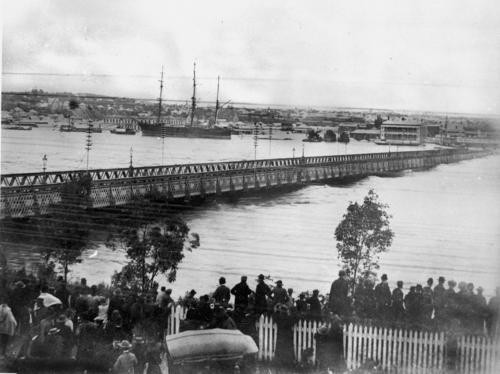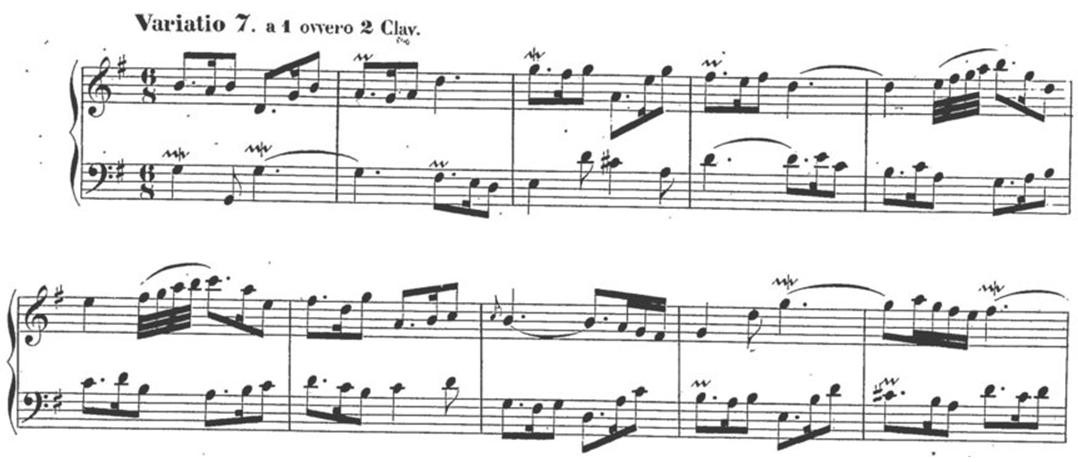
Victoria Bridge 1893 flood, Brisbane John Oxley Library, State Library of Queensland, negative number: 67645.
Join us for a special Tea & Music event at 10.30am, Tuesday 10 April. To mark the opening of the Floodlines exhibitions, critically acclaimed pianist Colin Noble will perform J.S. Bach’s technically outstanding Goldberg Variations BWV988 to a slideshow of historical images of the Brisbane 1893 flood and time lapse footage of the 2011 flood.

Brisbane River 2011 flood
Brisbane based pianist and teacher Colin Noble is a student of legendary Australian musicians, Pamela Page and Larry Sitsky, and holds Honours (UQ) and Masters (ANU) Degrees in Performance. He has made a specialty of playing music written after 1900, including six complete performances of Messiaen's Vingt Regard sur l'enfant Jesus. He has made several CDs to critical acclaim, as a piano solo artist, a chamber musician and as a producer, mostly recently releasing his version of the J.S Bach "Goldberg Variations" on the Centaur Label, and an all-Debussy CD due for release in 2012.

Colin has worked as an accompanist and a piano teacher at several schools in Brisbane including St Peter's Lutheran College, All Hallows School and currently works at St Margaret's as well as guest accompanying for Mt St Michael's. He has given many national radio broadcasts for the ABC, and his playing has been critically acclaimed for "formidable technique", "depth and reverence" and simply as "a tour de force". http://colinnoble.blogspot.com.au/
Colin has worked as an accompanist and a piano teacher at several schools in Brisbane including St Peter's Lutheran College, All Hallows School and currently works at St Margaret's as well as guest accompanying for Mt St Michael's. He has given many national radio broadcasts for the ABC, and his playing has been critically acclaimed for "formidable technique", "depth and reverence" and simply as "a tour de force". http://colinnoble.blogspot.com.au/

The “Goldberg Variations” Johann Sebastian Bach’s Aria with 30 Variations or the Goldberg Variations was published in 1741, and is arguably the most important cycle of variations in the history of music before 1800. Technically outstanding, the large-scale cyclical layout (based on a sequence of 10 x 3 movements, incorporating a series of nine canons, one at every third variation, arranged in order of ascending intervals to move towards a climax, with a final quodlibet) is without precedent. The basis of the composition is a ground bass of 32 bars, developed from the Ruggiero and related bass patterns, first presented in the aria and then subjected to free and canonic elaboration in a wide variety of ways. In their monothematic and emphatically contrapuntal conception, the Goldberg Variations set the scene for Bach’s last keyboard works – the Musical Offering and Art of Fugue. Some sources suggest that the Variations was a contracted work, but the lack of any formal dedication in the original edition suggests that the work was not composed to a commission. It is conceivable, on the other hand, that after publication Count von Keyserlingk of Dresden , whom Bach visited in 1741, received a copy of the work for the use of his young resident harpsichord player Johann Gottlieb Goldberg, a pupil of both J.S. and W.F. Bach. In his own copy (which came to light only in 1975) Bach added a series of 14 enigmatically notated canons on the bass of the Aria in about 1747–8. They place a special and individual accent on the canonic writing that occupied him so intensively at that period. (Paraphrased from The New Grove Dictionary of Music and Musicians).
The “Goldberg Variations” Johann Sebastian Bach’s Aria with 30 Variations or the Goldberg Variations was published in 1741, and is arguably the most important cycle of variations in the history of music before 1800. Technically outstanding, the large-scale cyclical layout (based on a sequence of 10 x 3 movements, incorporating a series of nine canons, one at every third variation, arranged in order of ascending intervals to move towards a climax, with a final quodlibet) is without precedent. The basis of the composition is a ground bass of 32 bars, developed from the Ruggiero and related bass patterns, first presented in the aria and then subjected to free and canonic elaboration in a wide variety of ways. In their monothematic and emphatically contrapuntal conception, the Goldberg Variations set the scene for Bach’s last keyboard works – the Musical Offering and Art of Fugue. Some sources suggest that the Variations was a contracted work, but the lack of any formal dedication in the original edition suggests that the work was not composed to a commission. It is conceivable, on the other hand, that after publication Count von Keyserlingk of Dresden , whom Bach visited in 1741, received a copy of the work for the use of his young resident harpsichord player Johann Gottlieb Goldberg, a pupil of both J.S. and W.F. Bach. In his own copy (which came to light only in 1975) Bach added a series of 14 enigmatically notated canons on the bass of the Aria in about 1747–8. They place a special and individual accent on the canonic writing that occupied him so intensively at that period. (Paraphrased from The New Grove Dictionary of Music and Musicians).
Tea & Music: Floodlines Tuesday 10 April, 10.30am, Auditorium 1
To purchase tickets for Tea & Music,go to http://www.slq.eventbrite.com/ or call 3840 7768
Comments
Your email address will not be published.
We welcome relevant, respectful comments.